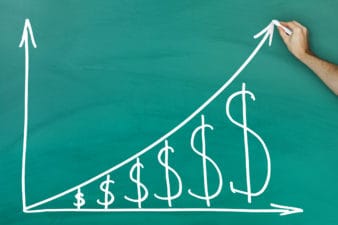Are you a retiree looking for ways to save on taxes?
Then you may just be in luck.
The Canada Revenue Agency has a number of tax breaks specifically for older or retired Canadians. While some of these are calculated for you automatically by the CRA after you file, there are others you may be eligible for that you’re not getting. Particularly if you’re drawing a pension or annuity, these breaks can save you a considerable amount of money.
So, without further ado, let’s take a look at the three huge CRA tax breaks for retirees in 2020.
Age amount
The age amount is a basic claim amount that all older Canadians can take whether they’re retired or not. If you’re 65 years of age or older and your income was less than $87,750 last year, you can claim this amount when you file your taxes in April. If your income was less than $37,790, you can claim $7,494. If it was between $37,790 and $87,750, the amount will vary. Either way, this is a portion of your income that gets a 15% tax credit applied to it.
Pension income amount
The pension income amount is a portion of your pension income that has a tax credit applied to it. If you have an employer-sponsored pension, this amount is most likely being deducted for you automatically by the CRA. However, you can also claim this amount on RRSPs, split pension amounts, and other types of annuity income. If you have pension or annuity income coming in and aren’t sure if you’re getting the pension amount, speak to an accountant. It’s not a huge tax break, but it can make a difference.
RRSP contributions
If you’re a retiree, you’re probably aware that RRSP contributions are tax deductible.
What you may not be aware of is the fact that you can keep making RRSP contributions when you’re already retired.
Mandatory RRSP withdrawals don’t kick in until age 71, so you can keep contributing up until you reach that age. If you’re 65, that gives you six years to keep getting RRSP tax deductions.
What should you do with RRSP money after you’ve contributed it?
One great idea is to put the money into ETFs like Vanguard S&P 500 Index Fund (TSX:VFV). ETFs are excellent investments for retirees who aren’t financial experts, because they give you “guaranteed” average returns, without you having to do in-depth research. These investments simply replicate the holdings of a stock market index, such as the S&P 500, and pass the returns on to you (minus a small fee).
Why VFV in particular?
Well, it’s well known that U.S. markets tend to outperform Canadian markets. Over the past decade, that’s been more true than ever. In that period, the S&P 500 has risen 147%, while the TSX has risen just 49%. By buying VFV, you buy a slice of the U.S. markets in exchange for a tiny management fee. Not only that, but if you buy the U.S.-listed version (VOO) in an RRSP, you don’t pay any withholding taxes on the dividends. So, you get an extra tax break that’s not available in any Canadian account other than an RRSP.








